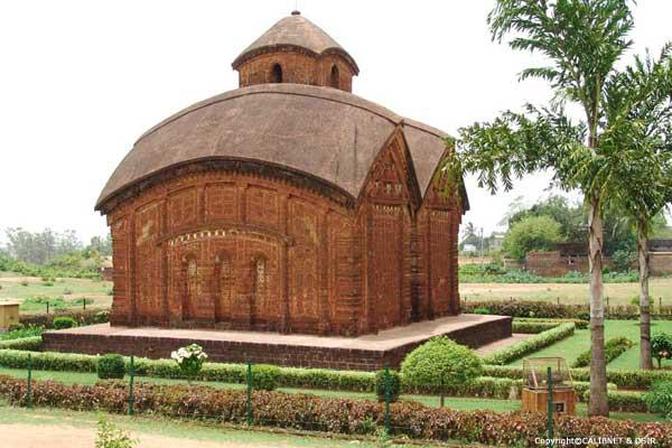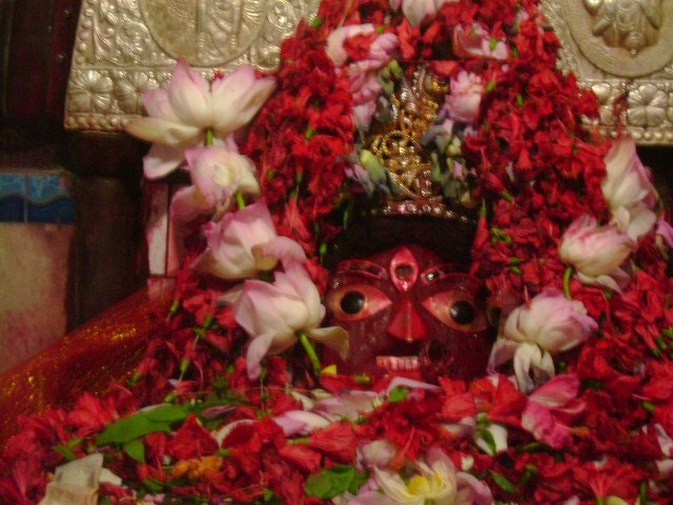
Keshta-raya Temple of Bishnupur
A temple formed on the combination of two temple, is what depicts the true style of the Jor-Bangla architecture. Two such temples are found in Bishnupur, but only one of them remains in a preserved state. The second one is in ruins. The former and conserved one is the Jor-Bangla or Keshta-Raya Temple, and the other one known as Mahaprabhu temple.
The Keshta-Raya Temple is famous for its structural configuration and exclusive terracotta sculptures. According to the dilapidated inscriptional records, the temple is said to have been erected by Raghunatha Singha in 1655 AD. The structural pattern is unique in itself. It resembles the union of two hut-like structures, having two angled roofs combined to form a single architecture, installed with a char-chala tower on the crown.
Facing the southward direction, the temple has a base-platform measuring 11.8 m in length and 11.7 m in breadth, the stature being 10.7 m. The temple has some of the most exquisite terracotta works on all three sides of the porch facades. Except the stucco Shadbhuja (Six-Handed) figure of Sri Chaitanya (not worshipped nowadays), there is no other image or décor found inside the temple. Outer terracotta panels depict scenes from the Ramayana and the Mahabharata, the Krishna-Lila and other social themes. Exceptionally ornamented terracotta art places this temple high among all Bishnupur Temples.
The Mahaprabhu temple, as mentioned earlier, is in the Jor-Bangla group. It stands out to be probably constructed in 1734-35 AD, during the rule of Gopala Singha.
A temple formed on the combination of two temple, is what depicts the true style of the Jor-Bangla architecture. Two such temples are found in Bishnupur, but only one of them remains in a preserved state. The second one is in ruins. The former and conserved one is the Jor-Bangla or Keshta-Raya Temple, and the other one known as Mahaprabhu temple.
The Keshta-Raya Temple is famous for its structural configuration and exclusive terracotta sculptures. According to the dilapidated inscriptional records, the temple is said to have been erected by Raghunatha Singha in 1655 AD. The structural pattern is unique in itself. It resembles the union of two hut-like structures, having two angled roofs combined to form a single architecture, installed with a char-chala tower on the crown.
Facing the southward direction, the temple has a base-platform measuring 11.8 m in length and 11.7 m in breadth, the stature being 10.7 m. The temple has some of the most exquisite terracotta works on all three sides of the porch facades. Except the stucco Shadbhuja (Six-Handed) figure of Sri Chaitanya (not worshipped nowadays), there is no other image or décor found inside the temple. Outer terracotta panels depict scenes from the Ramayana and the Mahabharata, the Krishna-Lila and other social themes. Exceptionally ornamented terracotta art places this temple high among all Bishnupur Temples.
The Mahaprabhu temple, as mentioned earlier, is in the Jor-Bangla group. It stands out to be probably constructed in 1734-35 AD, during the rule of Gopala Singha.

 RSS Feed
RSS Feed

